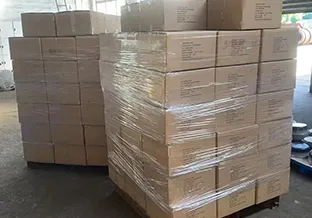
different types of cast iron pans
Different Types of Cast Iron Pans A Guide to Your Cooking Needs
Cast iron pans have earned a venerable reputation in kitchens around the world, revered for their durability, heat retention, and ability to improve with age. The diversity of cast iron cookware can be overwhelming, as various types are tailored for specific cooking tasks. This guide will explore the different types of cast iron pans, helping you choose the right one for your culinary adventures.
1. Skillets
The quintessential cast iron skillet is perhaps the most recognized piece of cookware. Ranging from 6 to 15 inches in diameter, these versatile pans are perfect for sautéing, frying, baking, and even roasting. The broad, flat cooking surface provides ample heat distribution for achieving a perfect sear on meats and vegetables. Many skillets come pre-seasoned, making them ready for use right out of the box, though they will benefit from regular seasoning to maintain their non-stick properties.
2. Dutch Ovens
Dutch ovens are heavy, deep, and often come with a tight-fitting lid, making them ideal for slow-cooking, braising, and stewing. Their thick walls allow for even heat distribution and retention, which is perfect for dishes that require slow cooking over a longer period. Available in various sizes, they can range from small (3 quarts) to extra-large (7 quarts or more), accommodating various recipes. Many Dutch ovens are also enamel-coated, offering a smooth surface that requires less maintenance and can be used for acidic ingredients, unlike traditional cast iron.
3. Griddles
Ideal for breakfast lovers, cast iron griddles offer a broad, flat cooking surface perfect for pancakes, eggs, and grilled sandwiches. They typically come in rectangular or square shapes, fitting multiple items at once, making family meals a breeze. Some griddles are designed to fit over two burners, allowing for greater cooking space and even heat distribution.
different types of cast iron pans

A southern staple, cornbread pans are designed specifically for baking cornbread, but they can also be used for other baked goods. These pans often come with individual sections, allowing each piece to develop a crispy crust. Their unique shape not only creates a visual appeal but also enhances the cooking experience.
5. Braisers
Braisers, also known as “braising pans,” feature tall sides and a wide base and are perfect for one-pot meals that require both browning and slow cooking. They often come with a heavy lid that helps trap moisture, making them excellent for dishes like pot roasts or chicken fricassée. The versatility of braisers allows them to be used on the stovetop or in the oven.
6. Woks
While traditionally associated with Asian cuisine, cast iron woks offer excellent heat retention and distribution, making them great for stir-frying. The curved sides promote swift cooking and easy tossing of ingredients. Cast iron woks can be heavy, but their durability makes them a worthwhile investment for those who love stir-frying or deep-frying.
7. Specialty Pans
Beyond the traditional pans, there are numerous specialty cast iron cookware options, including pizza stones, muffin pans, and even shaped skillets for individual servings. These unique items can elevate your cooking by providing specific functionalities that cater to your culinary preferences.
Conclusion
Choosing the right type of cast iron pan can significantly enhance your cooking experience. Each type of pan serves its purpose, allowing you to explore various cooking methods and techniques. Whether you're searing steaks in a skillet, simmering a hearty stew in a Dutch oven, or preparing breakfast on a griddle, cast iron cookware can help you achieve delicious results. With proper care and maintenance, cast iron pans can last for generations, becoming beloved family heirlooms that enrich your kitchen for years to come. Embrace the versatility of cast iron pans, and let your culinary journey begin.
-
Season Cast Iron Perfectly with GPT-4 Turbo TipsNewsAug.01,2025
-
High Quality Cast Iron Cookware - Baixiang County Zhongda MachineryNewsAug.01,2025
-
Premium Cast Iron Pan: Durable & Perfect HeatNewsAug.01,2025
-
High Quality Kitchen Durable Black Round Cast Iron Cookware Pancake Crepe Pan-Baixiang County Zhongda Machinery Manufacturing Co., Ltd.NewsAug.01,2025
-
Cast Iron Cookware - Baixiang County Zhongda Machinery | Nonstick, Heat ResistanceNewsAug.01,2025
-
High Quality Kitchen Durable Black Round Cast Iron Cookware - Baixiang County Zhongda Machinery | Non-Stick, Heat Retention, DurableNewsJul.31,2025


